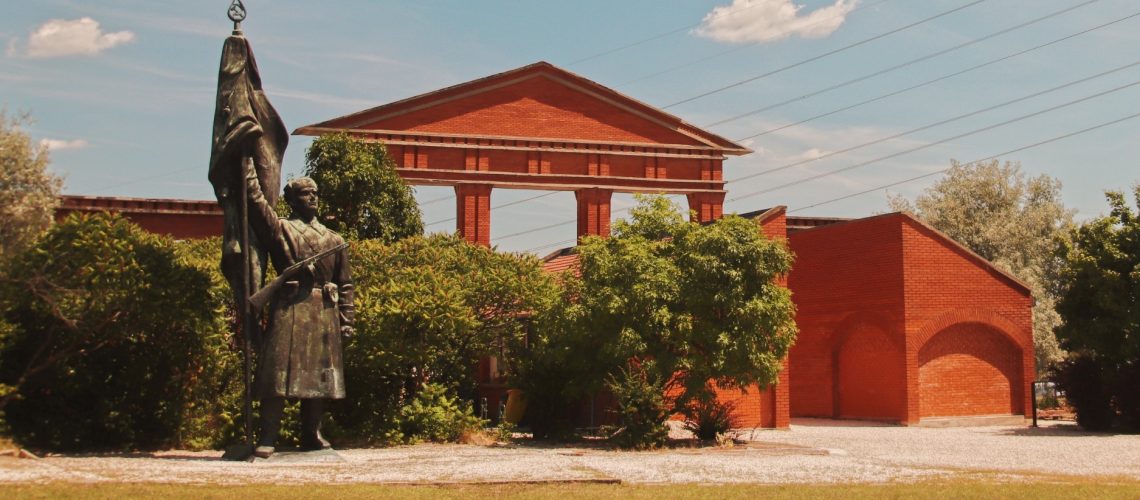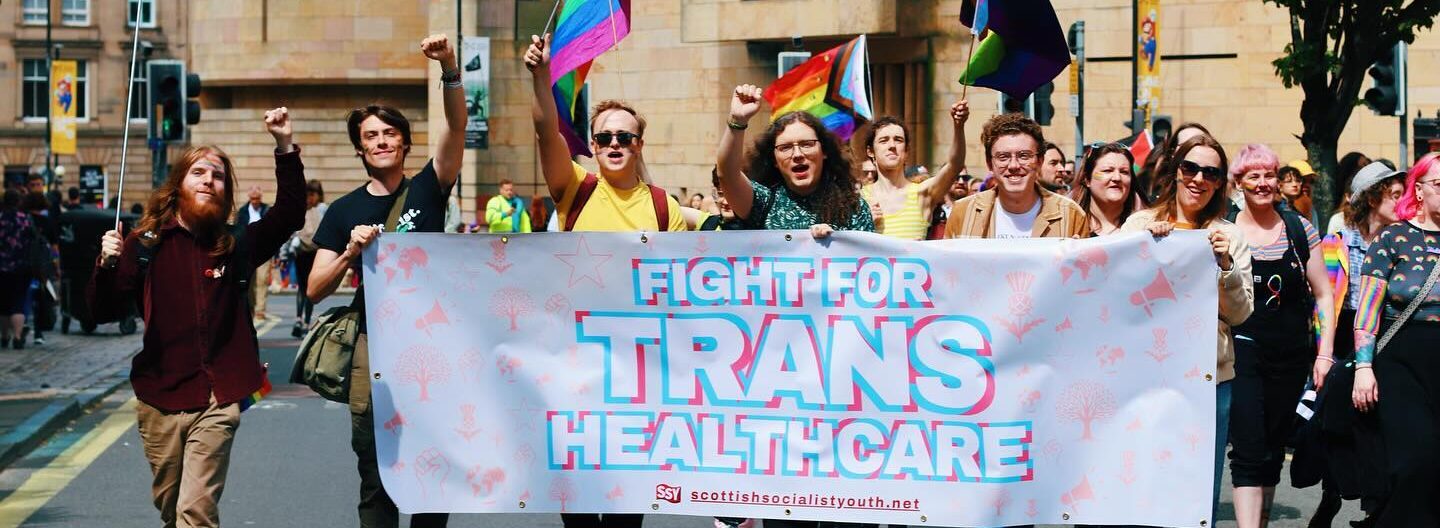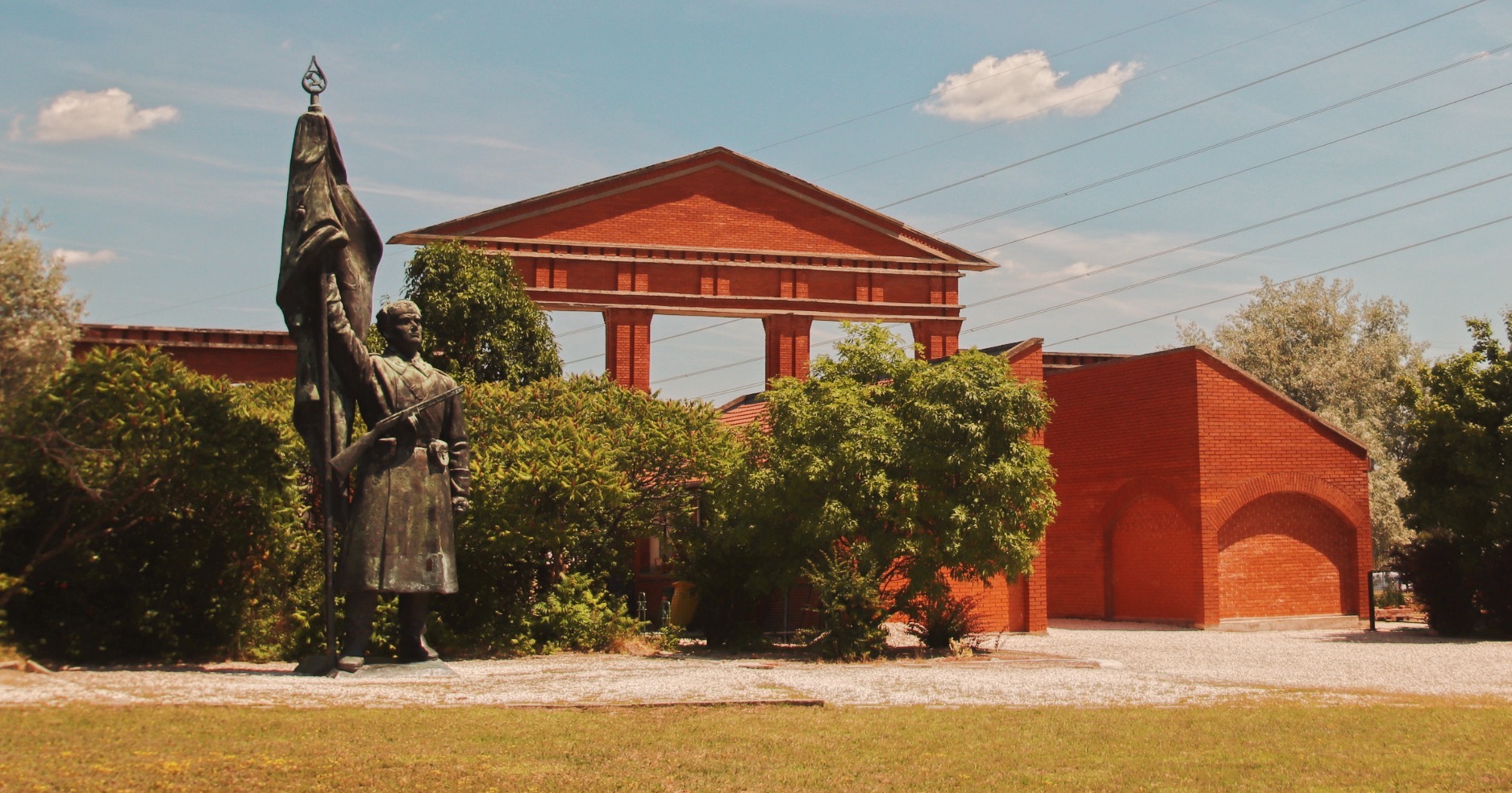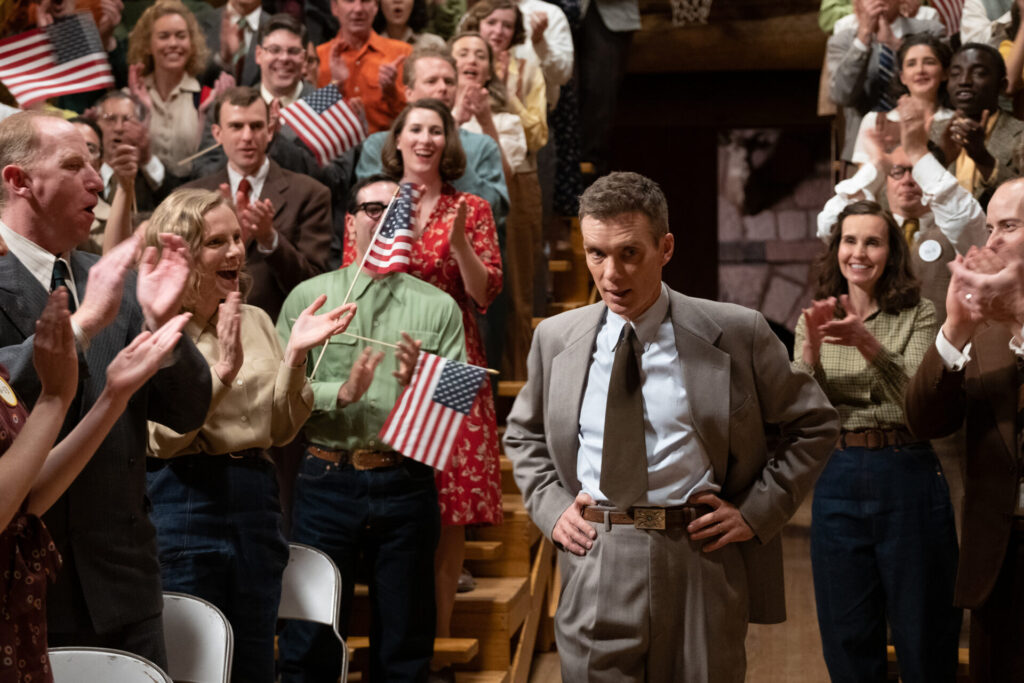In June 2020, Black Lives Matter protesters brought down the statue of 17th century slave trader Edward Colston in his hometown of Bristol. As the statue lay on the bottom of Bristol Harbour, a debate about the place of statues in society ignited. It was simplified into an argument about the law. Does a just cause justify an unlawful action? As it turned out, the activists who pulled Colston down were acquitted, and their actions deemed lawful by the jury. That means nothing is sacred and offensive statues should be toppled, right?
On the other side of Europe, behind the fallen Iron Curtain, Soviet statues were pulled down and theatrically blown up in a wave of iconoclasm destroying the symbols of the old regime. Soviet monuments were replaced with freedom ones, and Orthodox symbols took place of stars, hammers, and sickles. Some war memorials to the Soviet Army who liberated Eastern Europe were kept, like Slavín in Bratislava, Slovakia, while others were torn down even before the revolution. A statue of a woman holding up a palm leaf towering above Budapest, originally erected to celebrate the Soviet liberation army after World War II, has been transformed into a monument to Hungary’s freedom and independence. A statue of a Soviet soldier that used to be below the woman’s feet was torn down in the revolution of 1956, the monument’s inscription was modified, and the Russian version of it removed.
Is it right for the popular consensus or a social movement to remove a statue? Does the subsequent occupation erase the sacrifice of a liberating army? Who do we put on pedestals and whom does the government protect and whom does it erase? And whom does the public space belong to?
The obvious answer (for me) to the Colston question is to remove him, let him decay in the Bristol harbour. Once he’s dealt with, let us bring down all the colonial statues, all the Columbuses and Rhodeses. And yet this is considered radical and unacceptable. I had a law graduate explain to me how these rioters were destroying private property. They should have asked politely. Besides, Colston didn’t do anything illegal, slavery was very much accepted during his lifetime.
To understand the problem with protecting statues as private property, we must look at what statues are. They are not just meaningless slabs of marble or bronze. They are people literally placed on a pedestal by influential individual or the government, honouring them, their actions, and their contributions to society – great or terrible, based on who’s judging them. Statues are usually placed above the line of sight so that people must look up to them, and they are larger than life-sized, and therefore seem larger than life. We don’t erect statues to any historical figures, it’s only the ones we venerate – or rather who the establishment and the political elites do.
The problem goes deeper than that. What’s being displayed on the pedestal is not just a historical atrocity but a reminder of the still present inequality and injustice. Colston’s legacy lives on in the systemic racism of the British police, the wealth gap, the education gap, the high rates of unemployment, prosecution, and sentencing of Black people. While both sides of the aisle condemn the radical act of toppling Colston (Priti Patel called it “thuggery”, and Keir Starmer “lawlessness”), they do little to battle racial inequality. That’s why we can’t just amend the plaque as some have suggested.
But what about erasing history? Communities Secretary Robert Jenrick thinks that “historic monuments should be retained and explained”. He argues that if Colston weren’t displayed publicly, people would surely forget about his legacy of slave ownership. Just like everyone in Germany forgot about Nazism when the country removed all memorials to it. For people like Jenrick, it would be a wild idea to suggest a reform of the curriculum in schools to provide more space for education about colonialism and the empire, so that Colston doesn’t completely disappear from memory. Instead, the petition to include compulsory lessons about Britain’s role in colonisation was rebuffed.
It’s interesting to see how all over the former Soviet states and satellites, monuments to the regime were dismantled and statues of Lenin brought down, how the Allies ordered the destruction of all Nazi memorials, yet the British government protects the statues of slave traders. It’s as if statues reflected the values of the establishment and its relationship with the past.
In the United States, the debate around statues centres around Confederate monuments. Despite the American Civil War ending in 1865, “the vast majority of them were built between the 1890s and 1950s, which matches up exactly with the era of Jim Crow segregation,” said Mark Elliott, a history professor at University of North Carolina, for television network History. “All of those monuments were there to teach values to people,” Elliott said. They were no longer memorials of dead soldiers in graveyards but statues of glorified Confederate leaders in city squares. So much for history being written by victors.
Slovakia, as most of Eastern Europe, got rid of monuments to Communist leaders and party representatives as well as the history of the labour movement. Commemorative plaques disappeared, and names of squares and parks were changed. To what they were changed tells us a lot about the ideology of the new regime.
A park in the capital, Bratislava, originally dedicated to Karol Šmidke, a member of the Communist Party of Czechoslovakia, had its name changed too. Since the regime change of 1989, it has been called the Park of Andrej Hlinka, whose bust was erected in the park’s centre in 2007. Hlinka was a Slovak nationalist and the founder of Hlinka’s Slovak People’s Party, a far-right clerofascist political party fighting for Slovak autonomy, first from the Austro-Hungarian Empire and later Czechoslovakia. During World War II, albeit after Hlinka’s death, the party formed the government of the fascist Slovak State. They were responsible for collaborating with Nazi Germany, being part of the invasion of Poland in 1939 and the Soviet Union in 1941, as well as participating in the Jewish deportation into concentration camps.
In 2011, the municipal council of another Slovak town, Rajec, unveiled a bust of Ferdinand Ďurčanský, who served on several ministerial positions in the Slovak State. He was also responsible for formulating and signing laws taking away basic rights from the Jewish population, and as a member of the Hlinka’s Party, he cooperated in constructing the antisemitic ideology of the Slovak State. After the war, he fled abroad to avoid his death sentence. When Slovak digital news platform Aktuality.sk was surveying the mood of the locals towards the bust 11 years after it had been built, it appeared people wanted to keep it. They were proud that an important historical person, who fought for national autonomy, was born in their town. One of the respondents, Slavomír, a 60-something-year old man said: “History must always be remembered. Just look at what is happening today, when young people don’t know how it used to be.” When asked about who Ďurčanský was and what he did, the man didn’t know. So much for the educational power of busts and statues.
What should we do with statues of slave traders, Confederate generals, and fascists? At the base of this question is another question: Who should public places serve and how?
Public spaces should serve the public first and foremost. Ideally, the public would have a way to engage and reshape public spaces without having to wade through the red tape of government procedures. But protests and petitions couldn’t move Ďurčanský and they couldn’t move Colston either. Instead, the new legal protection for England’s heritage now requires full planning permission to remove all historic statues, plaques, and other monuments. And in the absence of the option of meaningful public conversation about the purpose and content of public spaces, toppling seems to be the only option.
Edward Colston now lies in a museum, literally, since he’s incapable of standing. Bristol Museums organized a temporary exhibition titled “The Colston Statue: What next?”, a part of which was producing a survey of people’s attitudes towards the statue and what faith they’d allow it. According to the survey, 4 out of 5 people from Bristol agreed with the statue being displayed in a museum, with only a small minority wanting it to be destroyed. This could be a suitable fate for other statues; it would help them finally fulfil their educational role. However, there is not enough space for all the statues in the world whose metaphorical death is long overdue. We should only keep the statues that have artistic value or whose story is historically significant like Colston’s. We can integrate them in specific exhibitions like Bristol Museums did, or transport them to open air museums, just like they did with Soviet Statues. Budapest built Memento Park for monuments and plaques from their Soviet period, and Lithuanian Vilnius allocated their Soviet statues to Grūtas Park. The rest of the statues can be ground to dust and recycled.
But after a statue is down, what to do with the plinth? Some advocate for leaving a scar, an empty pedestal, or a defaced figure. Instead of amending the plaque on an existing statue, we can amend the plaque after the statue is gone to commemorate the event of the toppling. The Bristol Museums report says that “a majority of people support adding a plaque in the vicinity of the plinth to reflect the events of 7 June 2020”. The people of Bristol would also “support using the plinth for temporary artworks or sculptures”. It would return the public space back to the people, ideally provide a place for local artists, and begin the process of drowning the ghost of Colston once and for all.
If we took down all colonial statues, a vast space would open for new statues, or even better, new memorials. Dr Elizabeth Alexander discusses why memorials are superior to statues on an episode of the podcast Getting Curious with Jonathan Van Ness. Alexander, a scholar, teacher, and a poet, picked the Vietnam Veterans Memorial in Washington DC as an example. Sitting in front of the giant statue of Abraham Lincoln, the memorial has a completely different atmosphere. “Most monuments you look up, and in this one, there’s a slash that goes down into the ground. And when you experience it, you walk down into the ground, you do not look up. So physically already you’re feeling a very different way than when your neck is craned back to see this mighty thing.” Instead of promoting the great man narrative, the memorial doesn’t glorify a couple of figurative war heroes, but instead materializes the thousands upon thousands of lives lost. “It’s a very emotional experience to go there because the space invites you to have an emotional engagement and not merely stand back in awe,” said Alexander.
Memorials need to be more than a symbol though. Vietnam Veterans Memorial does not seem to have stopped the United States from charging into more wars. In the United Kingdom, we shouldn’t be fooled by tokenistic gestures either. Instead of Windrush scandal reparations, we got a Windrush monument just last June. Located at Waterloo Station in London, the statue of a family with suitcases honours the thousands of people who arrived in the UK from Caribbean countries between 1948 and 1971. However, in recent years, hundreds of members of the Windrush generation were wrongly detained, deported and denied legal rights. Four years later, just 5% of Windrush victims have received compensation.
The UK is also planning to build a new Holocaust Memorial, and even though it’s future is uncertain because of legal rows over the planning permissions, Rabbi Herschel Gluck OBE hit the nail on the head. Speaking at a demonstration against the Rwanda deportations, and referencing the government turning away Jewish refugees during World War Two, Gluck said: “When the government wants to show that it cares about the Holocaust, the answer is not to make monuments, the answer is to let refugees in.”
At the end of the day, the fight about statues is just a symptom of a wider societal conflict of values and ideologies. The conservative powers cling to their old victors and conquerors, while the progressive forces try and usher in new ideals and heroes. It is a Sisyphean task to remove the statues of colonisers from public spaces without a government interested in open borders, anti-racism, and restorative justice. Statues provide a good discussion point, but they cannot become the main point of the fight. For every statue of Cecil Rhodes toppled, a new statue of an unelected monarch springs up. And even a statue symbolising a good cause is nothing more than a hollow gesture from the Tory government.
We cannot expect the current establishment to put up statues of Black Lives Matter protesters, and we cannot be surprised when former Soviet Republics take their monuments down. No government is looking at their statues evaluating whether those people deserve to be honoured. Statues are pure propaganda. Change the regime first, then all the old statues will come crumbling down and we can start putting up our own ideals on pedestals. Or even better, build interactive memorials that engage with the past, the present, and the future.







